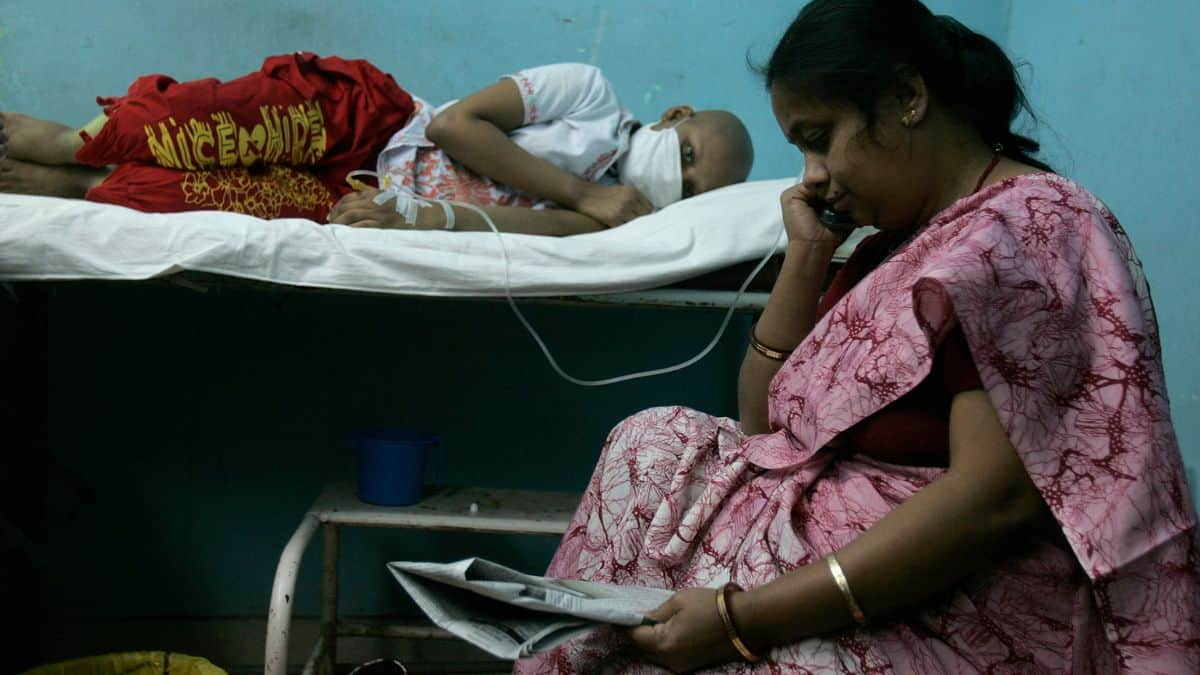Wockhardt, a leading Indian drug manufacturer, has developed Zaynich — a new-generation antibiotic that has shown remarkable success in combating infections caused by multi-drug-resistant (MDR) Gram-negative bacteria.
This development comes at a time when the world is struggling against the rising tide of antimicrobial resistance (AMR) — a crisis that threatens to push modern medicine back into a pre-antibiotic era.
The drug is being hailed as the first major antibiotic innovation to emerge from India in nearly three decades, and one that could have both domestic and international impact in managing bacterial infections that no longer respond to existing drugs.
What do we know Zaynich?
Zaynich is a combination antibiotic that merges Cefepime, a fourth-generation cephalosporin antibiotic, with Zidebactam, a beta-lactamase inhibitor and enhancer.
Together, they provide what researchers describe as a dual mechanism of action against some of the most resilient bacterial strains known to medicine.
Cefepime works by breaking down the bacterial cell wall, leading to rupture and death of the cell.
However, many Gram-negative bacteria defend themselves by producing enzymes known as beta-lactamases, which degrade antibiotics like cefepime and render them useless.
Zidebactam neutralises these enzymes and enhances cefepime’s activity by binding to the bacteria’s penicillin-binding proteins, thus improving its ability to kill the pathogen.
This dual function makes Zaynich a particularly strong contender in treating infections caused by bacteria such as Escherichia coli, Klebsiella pneumoniae, Pseudomonas aeruginosa, and Acinetobacter species — all of which are common sources of hospital-acquired infections that are increasingly resistant to traditional drugs.
According to Wockhardt’s data, Zaynich has shown a 20 per cent higher success rate in treatment compared to current antibiotic regimens.
Laboratory and clinical trials have indicated potent activity against multiple drug-resistant and even carbapenem-resistant strains, which are considered some of the hardest to treat in modern hospitals.
The US Centers for Disease Control and Prevention (CDC) classifies these pathogens as “urgent threats” due to their ability to evade multiple antibiotics. Infections caused by Gram-negative bacteria can lead to life-threatening conditions like sepsis, meningitis, pneumonia, and urinary tract infections.
These infections also tend to spread quickly in healthcare settings, further complicating management.
What did clinical trials reveal?
Zaynich’s potential was demonstrated in extensive clinical testing. Wockhardt reported a 100 per cent clinical cure rate among 30 critically ill patients suffering from life-threatening, drug-resistant infections.
These were individuals for whom all other antibiotic options had failed.
The company’s clinical trials, completed in January this year, indicated over 97 per cent efficacy in treating serious infections caused by meropenem-resistant Gram-negative pathogens.
Across a broader set of indications — including bloodstream infections, hospital-acquired pneumonia, and complicated urinary tract infections — the drug achieved a 98 per cent overall efficacy rate.
In particular, Wockhardt stated, “The drug demonstrated high pathogen eradication rates, including in tough-to-treat conditions like hospital-acquired pneumonia and bloodstream infections, where it achieved a 100 per cent cure rate.”
These results highlights why medical experts describe Zaynich as a potential “lifesaver” for patients who have no other viable antibiotic options left.
In hospital settings, where MDR bacterial infections lead to high mortality rates, prolonged hospitalisation, and increased medical costs, a new effective antibiotic could be transformative.
Even as Zaynich remains under Phase-3 clinical evaluation in several countries, the drug’s trial data has drawn attention for its unusually strong performance against multiple strains that resist first-line and even last-resort antibiotics.
Why does India’s antibiotic breakthrough matter?
Antimicrobial resistance is among the gravest threats to global health, as identified by the World Health Organization (WHO). Every year, millions of infections across the world fail to respond to antibiotics that once cured them with ease.
The WHO has listed Gram-negative bacteria among the top global priorities for the development of new antibiotics, given their ability to spread and exchange resistance genes across species.
In the United States, the CDC estimates that 2.8 million people contract drug-resistant infections annually, resulting in nearly 48,000 deaths.
In India, where infectious diseases are more prevalent and antibiotics are sometimes misused, the situation is particularly severe.
Over-the-counter antibiotic sales, self-medication, and incomplete courses have accelerated the rise of resistance among local bacterial strains.
A 2022 Lancet study projected that by 2050, antimicrobial resistance could cause up to 8 million deaths annually, with economic losses amounting to $100 trillion worldwide, reported the Indian Express.
Zaynich signals that Indian drug developers can now compete in the space of novel therapeutic research, not just generics.
The significance of Zaynich, therefore, extends far beyond India.
Since bacteria know no borders, a successful drug developed in one country can help treat infections worldwide.
How is Zaynich unique?
Zaynich’s strength lies in its biochemical mechanism.
While Cefepime directly attacks the bacterial cell wall, Zidebactam performs two vital roles — it inhibits the beta-lactamase enzymes that bacteria produce to neutralise antibiotics, and it acts as a beta-lactam enhancer that binds to bacterial targets to boost antimicrobial action.
The two ingredients work together to eliminate resistant bacteria effectively.
“Zidebactam functions as a beta-lactamase inhibitor, which protects cefepime from enzymatic breakdown. The compound interacts with bacterial penicillin-binding proteins to boost antibiotic effectiveness,” medical researchers observed in reports.
This mechanism allows Zaynich to neutralise bacteria that resist carbapenems — antibiotics often considered the “last line of defence.”
“The emergence of carbapenem-resistant Gram-negative bacteria creates a severe medical crisis, because these bacteria show resistance to all carbapenem antibiotics which serve as critical treatments for severe infections,” researchers have stated.
What challenges may Zaynich face?
While early trial data for Zaynich is encouraging, several hurdles remain before it can achieve widespread clinical use.
The drug still requires regulatory approvals in major markets, including the United States, where it is not yet cleared for medical use.
“Like any new drug, Zaynich must pass rigorous clinical trials to demonstrate safety, side effects, pharmacokinetics, and real-world efficacy across diverse patient groups,” medical experts have pointed out.
In India, the Indian Council of Medical Research (ICMR) and national antibiotic stewardship programmes will likely evaluate Zaynich’s inclusion in hospital treatment protocols.
Long-term success will depend on controlled prescription practices to prevent premature overuse and resistance.
Antibiotic resistance, by nature, is a dynamic challenge. Bacteria evolve rapidly, and even breakthrough drugs can lose effectiveness if misused. Therefore, continuous monitoring and responsible prescribing will be essential to prolong Zaynich’s utility.
Experts note that resistant bacteria “do not respect borders,” and misuse in one region can have global repercussions. Hence, introducing Zaynich under strict medical supervision will be vital to ensuring it remains effective for future generations.
Also Watch:
What does this mean for Wockhardt?
The development of Zaynich was supported by India’s Biotechnology Industry Research Assistance Council (BIRAC) and other governmental entities.
This model mirrors the global approach adopted by the WHO and national health agencies to stimulate research and development of new antimicrobials through partnerships, grants, and fast-track regulatory support.
For Wockhardt, Zaynich represents not only a scientific milestone but also a crucial business recovery.
The company’s shares, which had dropped to Rs.153 in March 2023, surged to over Rs. 1,170, a nearly sevenfold increase, after investors identified Zaynich as the innovation that could turn around its financial outlook.
As Wockhardt continues large-scale trials and prepares for broader commercialization, analysts estimate that the global market for anti-resistant antibiotics could surpass $1 billion, with Zaynich potentially capturing up to $500 million annually once approved worldwide.
What next for Wockhardt?
Zaynich is not an isolated success. It is part of a broader research programme at Wockhardt aimed at tackling infections resistant to conventional therapies.
The company is also developing antibiotics like EMROK and EMROK O, as well as MIQNAF (Nafithromycin), which recently received approval from India’s Central Drugs Standard Control Organisation (CDSCO) for treating community-acquired bacterial pneumonia (CABP) in adults.
Miqnaf stands out for its short three-day treatment course, which can improve patient compliance compared to traditional regimens.
Together, these developments demonstrate Wockhardt’s continuing commitment to antibiotic R&D despite prolonged financial strain.
According to the Indian Express, the company had faced 11 consecutive quarters of losses, but its recent focus on licensing and strategic partnerships offers a path toward recovery.
The firm is also pursuing research in diabetes management for emerging markets.
With inputs from agencies


)

)
)
)
)
)
)
)
)



